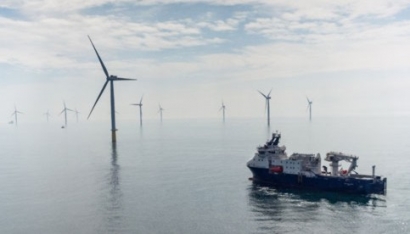
SMAST’s studies will begin later this spring. In 2017, Vineyard Wind entered into an agreement with SMAST through which the wind developer asked SMAST to design a broad-based approach to research capable of supporting long-term, regional studies in addition to monitoring of construction impacts.
During the planning phase, SMAST conducted a trial for an innovative “video trawl” system in the wind energy area that was funded by Vineyard Wind. The pilot program facilitated sampling of fish without harvesting, allowing for more efficient selection. SMAST also held four workshops with the region’s fishing industry to identify priorities for assessments of impacts on fisheries and ecological conditions that are associated with offshore wind development.
Based on input from more than 75 commercial and recreational fishermen who participated in the workshops and input from academics and government resource agencies, SMAST recommended a series of methodologies for fisheries monitoring and research on behalf of the nation’s first utility-scale offshore wind project, including:
The SMAST studies seek to further public understanding about the effects of offshore wind development and inform future permitting and public policy decisions regarding wind energy facility siting. The fishing industry has raised important questions about the impacts of offshore wind development on the marine environment and on sea life. The comprehensive research effort by SMAST will help establish a robust body of knowledge to benefit the American offshore wind industry and the fishing community long after the first Vineyard Wind project is completed.
Vineyard Wind was selected in May 2018 to negotiate long-term contracts with Massachusetts’ electric distribution companies (EDCs) for construction of an 800-MW wind farm 15 miles south of Martha’s Vineyard; these contracts have now been signed and are pending before the Department of Public Utilities for approval. Vineyard Wind remains on schedule to begin on-shore construction in 2019 and become operational by 2021.

